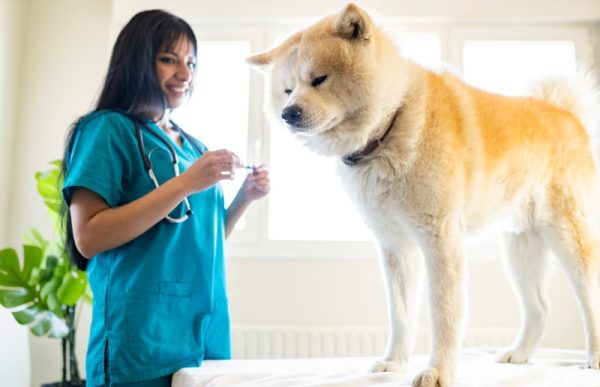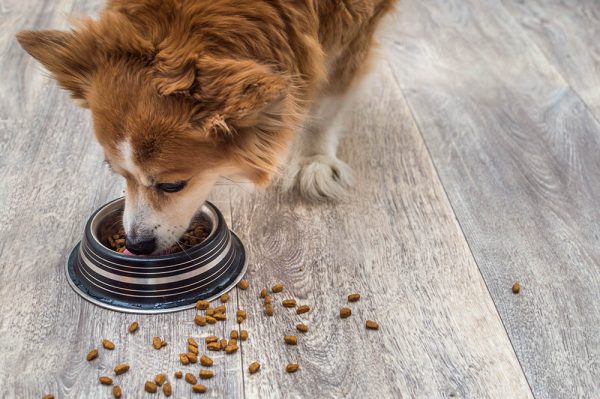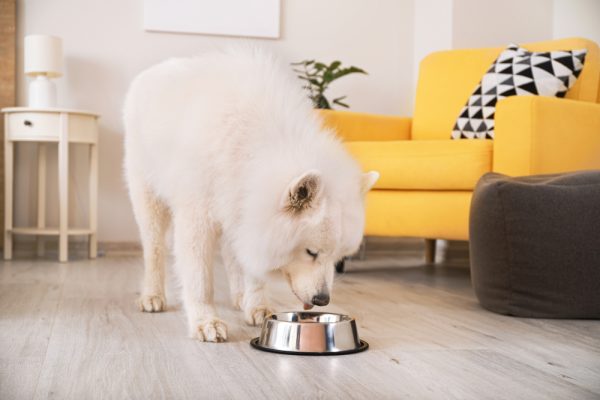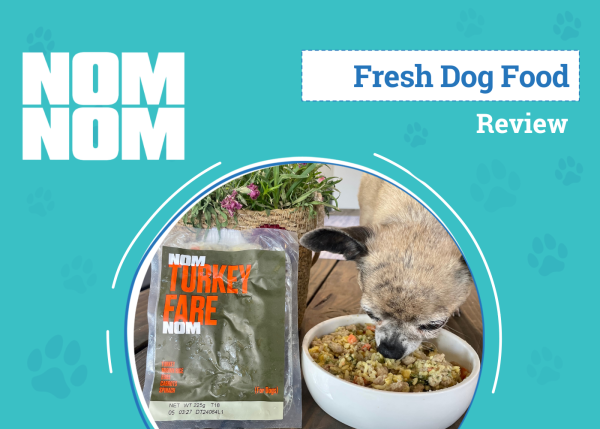In this article
View 8 More +The Auggie is also sometimes referred to as an Aussie Corgi and is a mixed breed that crosses the Australian Shepherd and the Corgi. It is a happy, joyful, playful pup that tends to be good with kids, gets along with other dogs, and, despite having Australian Shepherd in its heritage, doesn’t require too much daily exercise. This breed is eager to please its humans, and intelligent, which means these dogs are easy to train, and their grooming requirements are quite low, too.
As with any mixed breed, exactly what temperament and physical characteristics you get will depend on which parent breed the cross tends towards, but the Auggie usually has the short legs and long back of the Corgi combined with the markings of the Aussie, and the stature of the resulting pup means that it doesn’t need the 2 hours a day of exercise that the Australian Shepherd demands.
Breed Overview
Height:
10–13 inches
Weight:
20–30 pounds
Lifespan:
12–15 years
Colors:
White, tan, beige, brown, gray, blue, black
Suitable for:
Families looking for a playful, bright, affectionate dog
Temperament:
Loyal, loving, fun, playful, energetic, eager to please
The Auggie is a lively, fun dog that would make a good family pet as it gets along with children and can live with other pets. Their size means they can live in an apartment, and while they do require regular exercise, they are considered to only have moderate exercise requirements, similar to that of the Corgi parent, rather than the highly active Australian Shepherd parent breed.
Auggie Characteristics

Auggie Puppies
The Auggie dog is a mixed breed that is not commonly seen, which means it can be difficult to find breeders. Buyers should always do their due diligence when buying a dog, whether it is from a breeder or a classified ad. Determine as much history of the puppy as possible.
Ensure the parents have had appropriate health screening if buying from a breeder and try to meet the puppy and at least its mother before agreeing to take the dog. Because this is a mixed breed and not a designer hybrid, it should be very affordable. When meeting the puppy, ensure it is friendly, bright, and alert. It should want to investigate you but still look to its mum for guidance.
It can be difficult to get puppies from rescues and shelters. Most rescues have waiting lists for young dogs, and even if they don’t have a waiting list, puppies are snapped up quickly because most prospective owners want young dogs. However, it is worth enquiring at local rescues to see what dogs they have available. The rescue likely won’t have a full or reliable history of the dog, but they should be able to let you know how it is around other dogs and potentially cats.
If they have been seen by a vet since arriving at the shelter, you might also be able to get a good account of their physical health.
Auggie Breed Origin & History
As with any mixed breed, the exact history of the Auggie is unclear. It is unlikely that the cross has been intentionally bred that often. However, while we don’t know much about the history of the Auggie dog, we know a lot about the parent breeds.
Despite the name, the Australian Shepherd actually comes from America. It was bred from Australian herding dogs, which were bred with American dogs to create the athletic, working Australian Shepherd. The Aussie is full of energy, can work with livestock all day, and is popular on ranches and farms.
The Corgi hails from Wales and can be traced back to the 12th Century. It too was a herding dog and was bred to have a short stature so it could get out of the way of kicks while still being capable of nipping at heels to control livestock. It was very popular with Queen Elizabeth II when she was alive, and she kept dozens of Corgis throughout her life.


Temperament & Intelligence of the Auggie
Although there is some Australian Shepherd in the cross’s DNA, it is usually more Corgi than Aussie. The resulting cross is a lively and playful dog but doesn’t necessarily have the same high energy levels and exercise requirements as the Australian Shepherd.
However, it does come from two herding breeds, which means it will show herding tendencies. In some cases, this means that the dog will attempt to herd adults, children, and other dogs and cats in the house. It can also mean that the breed is prone to nipping at heels, and owners will need to train this out of their new dog as early as possible, especially if they have children.
The size of the Auggie, and the fact that it isn’t as highly strung as an Aussie means that it can do well in an apartment home, although it will certainly benefit from having its own outdoor space in the shape of a yard or garden.
As well as getting along with children and adults in the home, the Auggie will usually be accepting of strangers. Early socialization will help ensure this is the case, but the breed’s temperament gives a good basis to work from.
Are These Dogs Good for Families? 👪
The Auggie is a friendly and typically outgoing pup. They are known to get along with family members of all ages, including children, which makes them a good choice for families. They aren’t overly protective dogs and do well with strangers, too, so there shouldn’t be any problems with lively play between children and friends.
Parents might need to watch to ensure that the Auggie doesn’t nip at heels. While this is natural for these breeds, it can cause injury if the dog tries to nip at a child’s heels.

Does This Breed Get Along With Other Pets? 🐶 😽
The Auggie is also known for getting along well with other dogs. You should still take introductions gradually to give existing dogs and new dogs a chance to get to know one another, but there shouldn’t be any aggression on the part of the Auggie.
The breed doesn’t have a particularly active prey drive so it should be okay to live with cats, but you should never leave any dog unattended with smaller pets or small animals so always ensure caged pets are kept securely in their enclosures while the dog is around.

Things to Know When Owning an Auggie
The Auggie gets along well with family members of all ages and species, as well as strangers, which makes it a good choice of pet for most families. Similarly, they can also adapt to life in an apartment, as well as be happy with a garden or yard of their own to run around in.
However, as amenable as this mixed breed can be, it may not be the ideal breed for all owners. Below, we look at some of the most important factors to consider when choosing this breed.
Food & Diet Requirements 🦴
The Auggie dog doesn’t need a special diet, but, like all dogs, benefits from being given a nutritionally complete meal that is packed with high-quality protein as well as all essential vitamins and minerals required to ensure an active, healthy pup.
If you feed dry food, expect to give between two and a half and three cups of food per day, typically fed as two separate meals.
If feeding canned food, follow the manufacturer’s guidelines on the packaging. Whatever food you give, do not overfeed. The breed can be prone to putting on too much weight, especially if it doesn’t get a lot of exercise. One common cause of overfeeding is the giving of too many treats. Treats should not make up more than 10% of a dog’s daily calorie intake, and whatever calories you give in treats should be deducted from their daily food intake.
Always provide free access to fresh, clean drinking water throughout the day, especially if you feed dry kibble. Wet food contains some moisture, but your dog will still need to drink fresh water.
Exercise 🐕
Mention the Australian Shepherd to most people and they instantly think of a dog that needs hours and hours of exercise every day. And, for the most part, they would be right. As such, people have similar expectations of mixed breeds that include the Aussie in their genetic makeup: breeds like the Auggie.
Fortunately, most of the time, this isn’t the case. The Auggie typically gets its physical shape and size from the Corgi parent, which means it has shorter legs and a long back. And it has the exercise requirements to match.
It is a lively and playful dog that will happily chase a ball around, but if you can provide an hour of walks per day, that will be enough for this mixed-breed pup. You can consider some forms of canine sports, especially those that mimic the herding that both parent breeds were originally bred for, while agility is a good way to train and bond with your dog.
Training 🎾
Training is vital to all dogs and their owners. And while we most often think of teaching basic commands like sit and stay, this is only a part of training, which also consists of encouraging good behavior and discouraging bad behavior.
The Auggie can be prone to nipping at heels and herding people and other families. Through consistent training, it is possible to discourage these behaviors, but it will be easier if you start training your dog when they’re still young.
Socializing means exposing your dog to new situations, environments, and people and animals. Puppy classes are a good way to combine both training and socialization, but both of these activities should continue in the home, away from classes.
Grooming ✂️
Although the Auggie is considered relatively low maintenance, they do still require regular grooming. Only bathe when necessary, and ideally no more often than every 2 or 3 months. Use a sensitive shampoo to avoid causing dry skin or coat damage, and towel dry your Auggie rather than using a hairdryer.
Brush your dog’s coat a couple of times a week, except during shedding season when daily brushing will help remove dead hairs, not only keeping your dog comfortable but also reducing the number of hairs that find their way onto furniture and clothing. Teeth need to be brushed at least three times a week, but ideally daily, and you will also need to trim nails every 2 or 3 months.
You don’t need to cut an Auggie’s coat, although an occasional trim can help keep tufts under control and ensure greater comfort for your companion.
Health and Conditions ❤️
The Auggie is a mixed breed which helps reduce the likelihood of some hereditary conditions, but you do need to watch out for signs of conditions that affect either parent breed. In particular, epilepsy, intervertebral disc disease, and blindness can affect this breed.
- Cataracts
- Weight Problems
- Progressive Retinal Atrophy
- Intervertebral Disc Disease
Male vs Female
The male Auggie will grow a little bigger and heavier than the female. Although individual traits are more likely to determine a dog’s character than gender, there are some reports that male dogs are more prone to wandering, and are more boisterous, but are more loving.
Females can be prone to mood swings but are less dependent and needy than males.

3 Little-Known Facts About the Auggie
1. Auggies Have Strong Herding Instincts
Even though they are small, they may try to “herd” their owners, kids, or other pets by gently nipping at heels! This behavior comes from their herding lineage, so early training and socialization can help manage it while keeping their instincts engaged.
2. They Are a Good Option for Apartment-Living
Unlike the high-energy of the Australian Shepherd, Auggies are happy with moderate exercise, making them great for apartment living. A couple of daily walks, playtime with interactive and puzzle toys, and training sessions will keep them satisfied.
3. Auggies Are Very Smart
Auggies have the agility and intelligence of an Aussie mixed with the playful energy of a Corgi, making them great at tricks and dog sports. Their eagerness to learn and please their owners makes them highly trainable, but their intelligence also means they can get bored easily, so keeping them engaged is key.

Final Thoughts
The Auggie is a mixed breed. It combines the Australian Shepherd and the Corgi: a mix that results in an energetic and playful breed that is intelligent and easy to train, friendly, and that can make a great family pet even for those with young children and other dogs at home.
Despite being lively and somewhat energetic, the breed does not require an excessive amount of exercise, and it is considered low maintenance when it comes to grooming and care, too.
Early training and socialization are important, and so too is ensuring a good diet while avoiding over-feeding. Look for signs of health problems that are common in the parent breeds and take your dog to the vet for regular checkups to ensure they stay fit and healthy.
Featured Image Credit: Oleg Hmelnits, Shutterstock


















